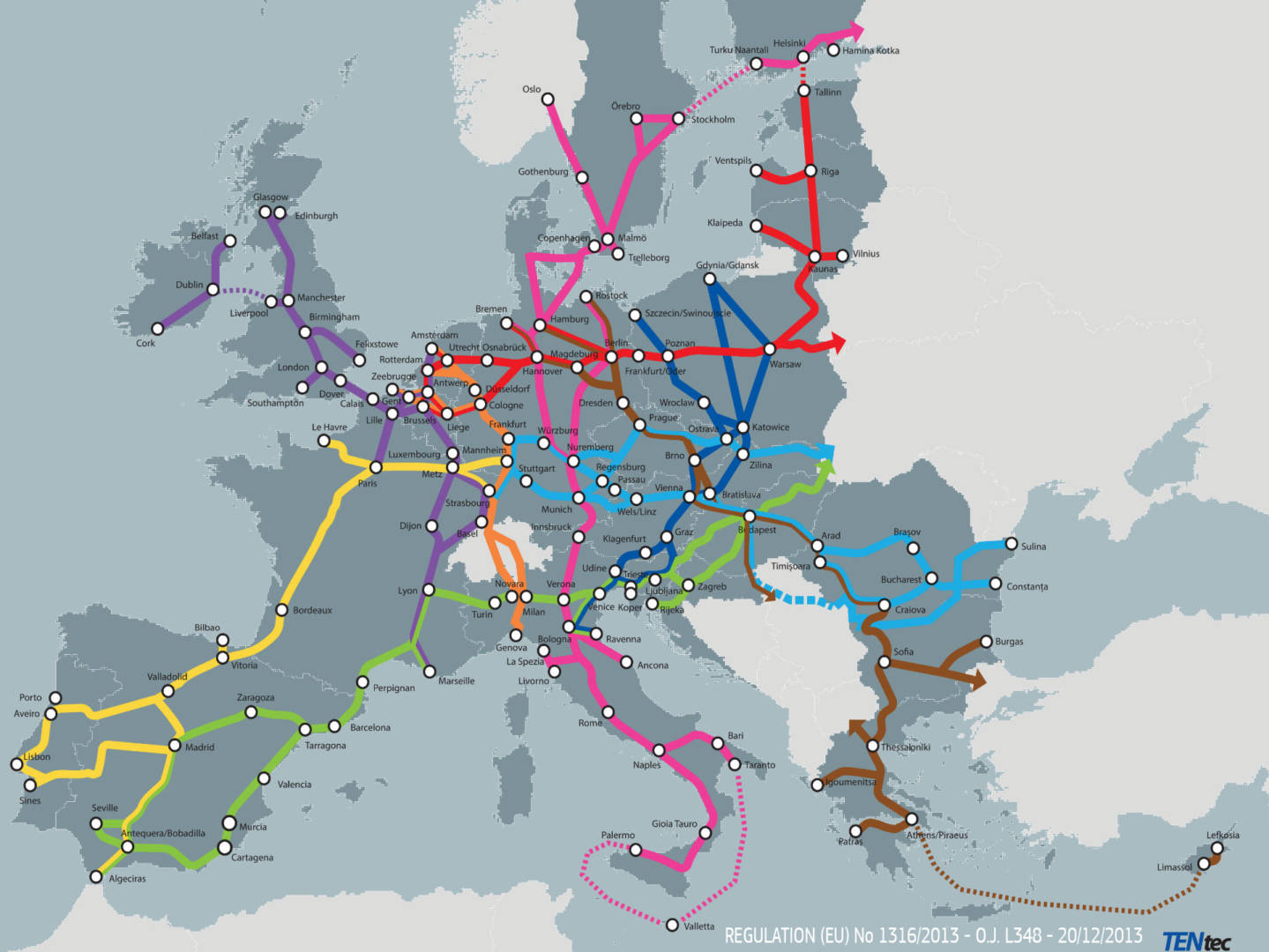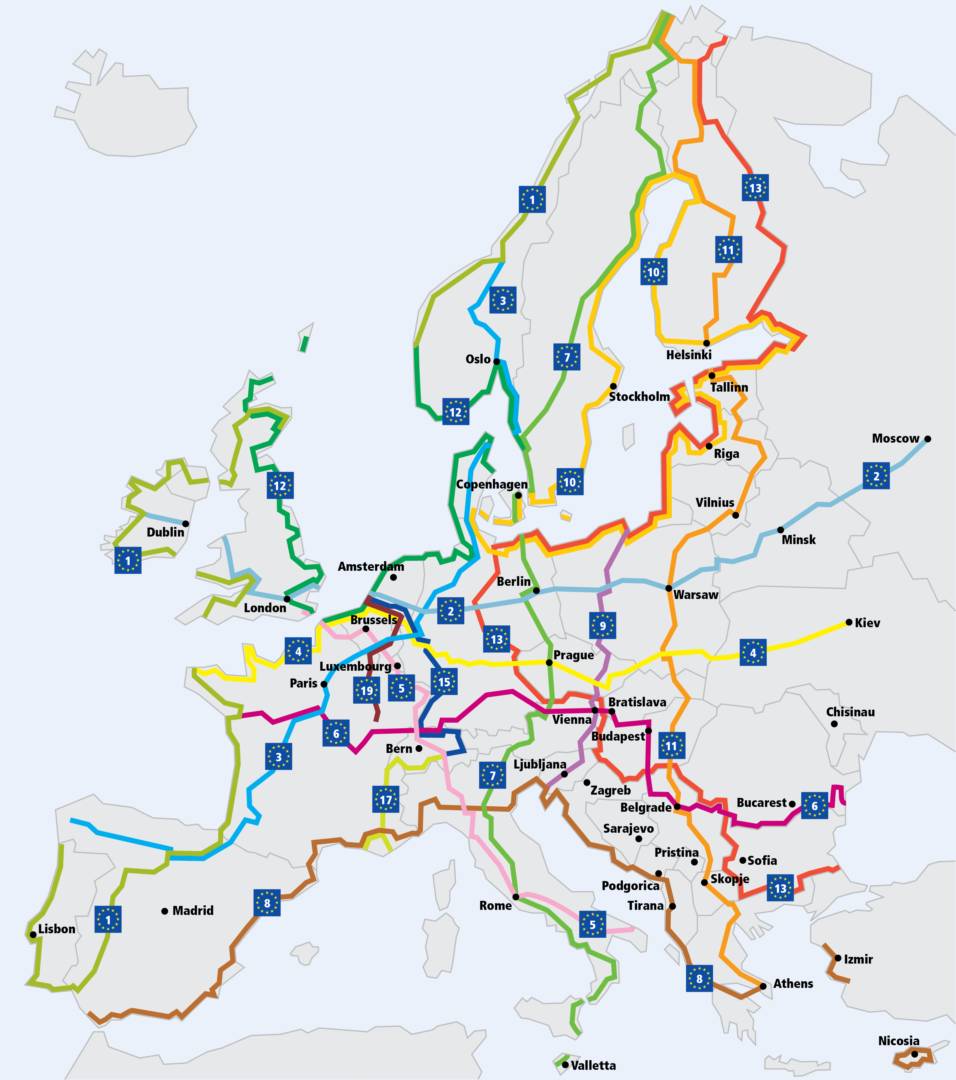ETSC calls for EuroVelo to be included in the TEN-T
The ETSC is a Brussels-based independent non-profit organisation dedicated to reducing the numbers of deaths and injuries in transport in Europe. It has been an excellent source of information on road safety in Europe since its foundation in 1993. The Trans-European Transport Network is a European Union policy that addresses the implementation and development of a Europe-wide network of railway lines, roads, inland waterways, maritime shipping routes, ports, airports and railroad terminals. The aim is to close gaps, remove bottlenecks and technical barriers, as well as to strengthen social, economic and territorial cohesion in the EU.
In its latest “PIN Flash Report 38” titled “How safe is walking and cycling in Europe?” from January 2020, the ETSC highlights the very real safety issues facing cyclists and that cycling fatalities and serious injuries are decreasing at a slower rate than most of the other modes of transport. The number of cyclist fatalities has declined, by only 0.4% on average each year between 2010 and 2018 in the EU, compared to a 3.1% annual reduction in motorised road user deaths over the same period.
In the light of this, the ETSC makes several policy recommendations. In particular, it advocates 30 km/h zones supported by traffic calming; reduced motor vehicle traffic; separate cycling paths; and improved enforcement, amongst others. Also importantly, the ETSC calls on the EU Institutions to include EuroVelo as part of the TEN-T and recommends that “the Connecting Europe Facility (CEF) instrument should be accessible for supporting its development and expansion.” The CEF is the EU funding instrument for strategic investment in transport, energy and digital infrastructure and has a budget of about €24 billion for the period 2021-27.

 You may recognise the striking similarity between some of the TEN-T’s so-called Core Network Corridors (on the left) and the EuroVelo network’s 16 routes (on the right).
You may recognise the striking similarity between some of the TEN-T’s so-called Core Network Corridors (on the left) and the EuroVelo network’s 16 routes (on the right).
The ECF has been lobbying for years for cycling and EuroVelo to be included in the TEN-T. A reference to cycling and EuroVelo was included in the TEN-T Guidelines for the first time in 2014. This means that “in the implementation of projects of common interest, due consideration should be given to the particular circumstances of the individual project concerned. Where possible, synergies with other policies should be exploited, for instance with tourism aspects by including, within civil engineering structures such as bridges or tunnels, bicycle infrastructure for long-distance cycling paths like the EuroVelo routes,” according to the TEN-T Guidelines. However, cycling projects cannot be the focus of standalone projects at the moment.
The ECF therefore gladly acknowledges the ETSC’s recommendation to “include the EuroVelo cycle network as part of the TEN-T and earmark CEF funds for its continued development.” The European Commission launched a review of the TEN-T policy in April 2019, and the ECF has been and will continue to lobby for further inclusion of cycling over the coming years.
In the meantime, we are also encouraging public bodies and other relevant stakeholders to contact their managing authorities on the national and regional level to take advantage of the opportunities that are currently available.
Author(s): Ernst Fahrenkrug